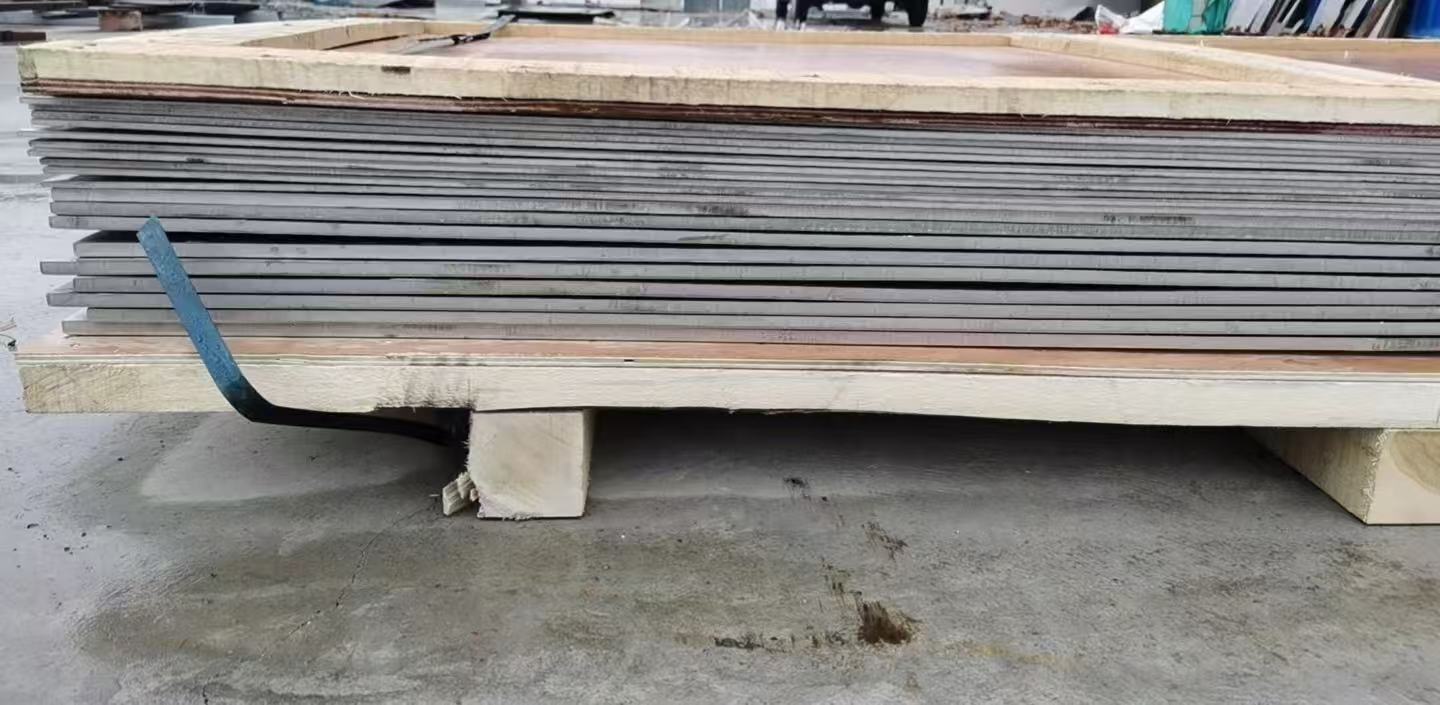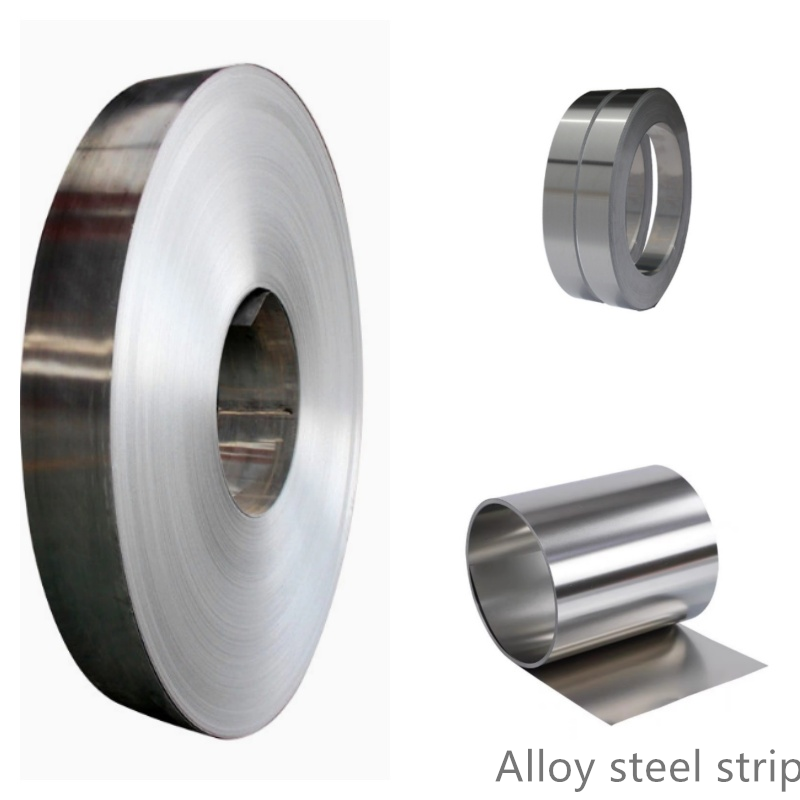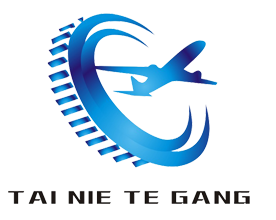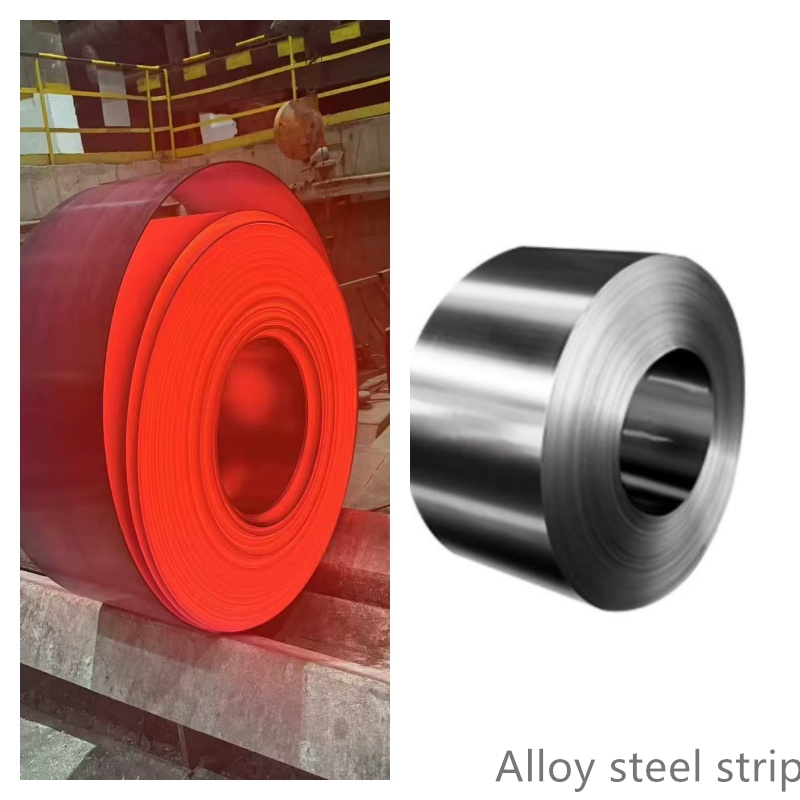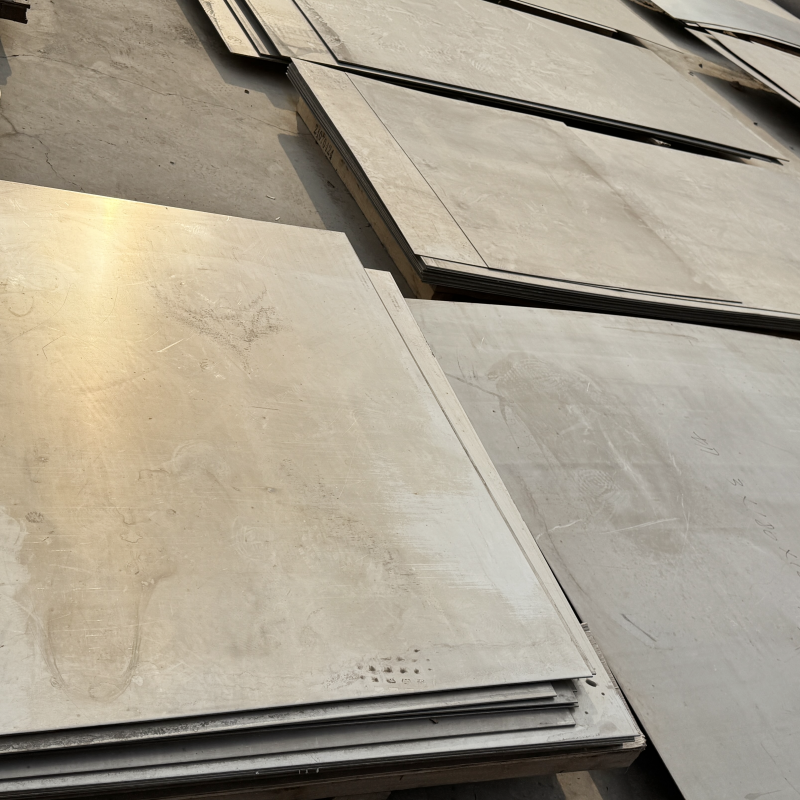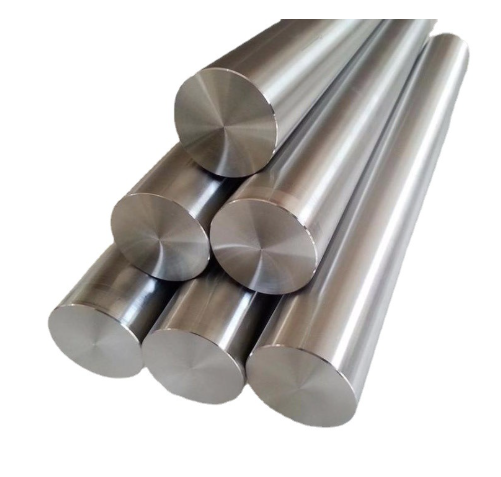
Product
Message
Incoloy825/incoloy800/incoloy925 alloy Plate N08825/2.4858 Roll,Steel belt
Incoloy825 (N08825, 2.4858) alloy is a fully austenitic nickel-iron-chromium alloy stabilized by titanium, and copper and molybdenum are added.
Category:
Nickel alloy
Email:
1. Overview and properties of Incoloy825 (N08825, 2.4858) nickel-based alloy:
1. Incoloy825 (N08825, 2.4858) alloy is a fully austenitic nickel-iron-chromium alloy stabilized by titanium, and copper and molybdenum are added.
Incoloy825 has the following properties:
(1) Good resistance to stress corrosion cracking.
(2), good resistance to pitting corrosion and crevice corrosion
(3), good oxidation resistance and non-oxidative thermal acid performance
(4), has good mechanical properties at room temperature and high temperature up to 550 ℃
(5) Certification of pressure vessels with manufacturing temperature up to 450℃
2. Chemical composition of Incoloy825 (N08825, 2.4858) alloy: see Table-1
Table-1 &n bsp; & nbsp; ; %
|
C≤ |
Si≤ |
Mn≤ |
P≤ |
S≤ |
Cr≥ |
Ni≥ |
Mo≥ |
Cu≤ |
|
0.05 |
0.50 |
1.00 |
0.035 |
0.030 |
19.5-23.5 |
38.0-46.0 |
2.5-3.5 |
1.5-3.0 |
|
Other |
N≤ |
Al≤ |
Ti≤ |
Fe≤ |
Co≤ |
V≤ |
W≤ |
Nb≤ |
|
- |
0.20 |
0.6-1.2 |
Margin |
- |
- |
- |
- |
3. Physical properties of Incoloy825 (N08825, 2.4858) alloy:
(1) Density: ρ=8.1g/cm3
(2) Melting temperature range: 1370~1400℃
|
Temperature °C |
Specific heat capacity J/Kg K |
thermal conductivity W/mK |
Resistivity μΩcm |
Elastic modulus KN/mm2 |
Coefficient of Thermal Expansion 10- 6/K |
|
20 |
440 |
10.8 |
112 |
195 |
|
|
93 |
|
|
|
|
|
|
100 |
462 |
12.4 |
114 |
190 |
14.1 |
|
200 |
488 |
14.1 |
118 |
185 |
14.9 |
|
204 |
|
|
|
|
|
|
300 |
514 |
15.6 |
120 |
179 |
15.2 |
|
316 |
|
|
|
|
|
|
400 |
540 |
16.9 |
124 |
174 |
15.6 |
|
427 |
|
|
|
|
|
|
500 |
565 |
18.3 |
126 |
168 |
15.8 |
|
538 |
|
|
|
|
|
|
600 |
590 |
19.6 |
126 |
161 |
16.0 |
|
649 |
|
|
|
|
|
|
700 |
615 |
21.0 |
127 |
154 |
16.7 |
|
760 |
|
|
|
|
|
|
800 |
655 |
23.2 |
128 |
142 |
17.2 |
|
871 |
|
|
|
|
|
|
900 |
680 |
25.7 |
129 |
130 |
17.6 |
|
982 |
|
|
|
|
|
|
1000 |
710 |
28.1 |
130 |
119 |
17.9 |
4. Mechanical properties of Incoloy825 (N08825, 2.4858) alloy:
The properties listed in the table below apply to the specified specification of Incoloy 825 alloy after softening annealing (stabilization annealing). Special properties for non-standard sized materials can be provided upon request for specific applications.
(1) Mechanical properties at room temperature (minimum value):
|
Products |
Specifications |
Yield Strength |
Yield Strength |
tensile strength |
Elongation |
|
Strip/cold rolled |
0.5-6.4 |
240 |
265 |
585 |
30 |
|
5-100 |
|||||
|
Rods |
1.6-64 |
||||
|
25-100 |
|||||
|
>100-240 |
220 |
250 |
550 |
35 |
|
|
Tube |
64-240 |
180 |
- |
530 |
30 |
|
5-100 |
240 |
265 |
585 |
30 |
|
|
Condensing and Heat Exchanger |
16-76 |
(2), high temperature mechanical properties (minimum):
|
Products |
Yield Strength RP0.2 N/mm2 |
Yield Strength RP1.0 N/mm2 |
||||||||
|
Temperature °C |
100 |
200 |
300 |
400 |
450 |
100 |
200 |
300 |
400 |
450 |
|
plates, strips, tubes |
205 |
180 |
170 |
160 |
155 |
235 |
205 |
195 |
185 |
180 |
|
Stick |
190 |
165 |
155 |
145 |
140 |
220 |
190 |
180 |
170 |
165 |
5. Incoloy825 (N08825, 2.4858) alloy conditional stress value:
High conditional stress values up to 90% of yield strength can be used in applications that allow slightly larger deflections. Permanent stresses from these stresses can cause dimensional changes and are not recommended for flange and gasket connections.
6. Metallographic structure of Incoloy825 (N08825, 2.4858) alloy:
Incoloy825 alloy has a stable face-centered cubic structure. Chemical composition and proper heat treatment ensure that corrosion resistance is not impaired by sensitization.
7. Incoloy825 (N08825, 2.4858) alloy corrosion resistance:
Incoloy 825 is a general purpose engineering alloy that is resistant to acid and alkali metal corrosion in both oxidizing and reducing environments. The high nickel content makes the alloy effective against stress corrosion cracking. It has good corrosion resistance in various media, such as sulfuric, phosphoric, nitric and organic acids, and alkali metals such as sodium hydroxide, potassium hydroxide and hydrochloric acid solutions. The higher comprehensive performance of Incoloy825 is shown in the nuclear combustion dissolver with various corrosive media, such as sulfuric acid, nitric acid and sodium hydroxide, which are all processed in the same equipment.
2. Application scope of Incoloy825 (N08825, 2.4858) alloy:
Incoloy825 is widely used in various industrial fields where the operating temperature does not exceed 550℃. Typical applications are:
1. Heating pipes, containers, baskets and chains used in sulfuric acid pickling factories.
2. Seawater cooling heat exchanger, marine product piping system, acid gas environment piping.
3. Heat exchangers, evaporators, washing, dip tubes, etc. in phosphoric acid production.
4. Air heat exchanger in petroleum refining.
5. Food engineering.
6. Chemical process.
7. Flame retardant alloy for high pressure oxygen application.
3. Incoloy825 (N08825, 2.4858) alloy processing and heat treatment:
Incoloy 825 alloy is easy to process in general industrial processes.
1. Preheating of Incoloy825 (N08825, 2.4858) alloy:
Temperature control is important to ensure that the corrosion resistance of the alloy is not impaired by sensitization. The workpiece must be surface cleaned before and during heating to keep the surface clean. Nicrofer 6023/6023H alloys will become brittle if the heating environment contains sulfur, phosphorus, lead or other low melting point metals. Impurities originate from marked paint, chalk, lubricating oil, water, fuel, etc. The sulfur content of fuel should be low. For example, the impurity content of liquefied gas and natural gas should be less than 0.1%, the sulfur content of city gas should be less than 0.25g/m3, and the sulfur content of petroleum gas should be less than 0.5%.
Heat treatment is best carried out in a vacuum resistance furnace or an inert gas protective atmosphere, as this allows precise temperature control and is free from contamination by impurities. If the impurity content of the gas is low, a gas heating furnace can also be considered, so that a neutral or weakly oxidizing atmosphere can be obtained. It should be avoided that the furnace gas composition fluctuates in oxidizing and reducing properties, and the combustion flame cannot directly burn to the workpiece.
2. Hot working of Incoloy825 (N08825, 2.4858) alloy:
The suitable hot working temperature of Incoloy825 alloy is 1150-900℃, and the cooling method can be water quenching or rapid air cooling. For hot working, the workpiece can be fed directly into a furnace that is already warm. After the furnace is warm, the holding time of the material is 60 minutes per 100mm thickness. Immediately after holding for the specified time, it is processed within the specified temperature range. If the temperature of the metal falls below the minimum processing temperature, it should be reheated. It should be annealed in time after hot working to ensure the best corrosion resistance and suitable crystal structure.
3. Incoloy825 (N08825, 2.4858) alloy cold working:
Cold working should be carried out after solution treatment. The work hardening rate of Incoloy825 is close to that of austenitic stainless steel, so the processing equipment should be adjusted accordingly. When the amount of cold working is large, there should be an intermediate annealing process. Final stabilization is required when the final cold deformation is greater than 15%.
4. Heat treatment of Incoloy825 (N08825, 2.4858) alloy:
The temperature range for softening annealing or stabilization treatment is 920-980°C, and the most suitable temperature is 940±10°C. For workpieces thicker than 1.5mm, water quenching or rapid air cooling is recommended for maximum creep resistance. During any heat treatment process, the precautions mentioned above regarding maintaining cleanliness should be observed.
5. Incoloy825 (N08825, 2.4858) alloy grinding and pickling:
The oxide near the weld of Incoloy825 workpiece is more difficult to remove than that of stainless steel and needs to be ground with a fine abrasive belt or grinding wheel. To maintain the luster of the metal, be very careful when sanding. Prior to pickling in a mixture of nitric and hydrofluoric acids, oxides should also be removed with sandpaper or a salt bath pretreatment. Special attention should be paid to the time of pickling.
6. Incoloy825 (N08825, 2.4858) alloy machining:
Machining of Incoloy 825 needs to be carried out after solution treatment, taking into account the work hardenability of the material. Unlike austenitic stainless steel, low surface cutting speeds and heavy feeds are required.
4. Incoloy825 (N08825, 2.4858) alloy welding:
1. When welding nickel-based alloys, the following procedures should be followed:
(1) Work site: The work site should be separate or far enough away from the carbon steel processing area, keep it as clean as possible, with partitions and avoid ventilation between the two areas.
(2) Work clothes and accessories: clean fine-grain leather gloves and clean work clothes should be worn.
(3) Tools and machinery: there should be special tools for nickel-based alloys and nickel-chromium steel, wire brushes should be made of stainless steel, and machinery and equipment such as shears, punches, rolling mills, etc. should be covered with felt, cardboard or plastic Paper to prevent iron and carbon metal from falling on the surface of the machine and causing the processing material to stick to it, causing corrosion. Remove scale, oil stains and various marks, and use acetone to clean the base metal and filler alloys (such as welding rods) in the welding area. Note that trichloroethylene TRI, perchloroethylene PER and tetrachloride TETRA cannot be used.
2. Incoloy825 edge preparation: It is best to use machining, such as turning, milling, planing, or plasma cutting. If the latter is used, the cutting edge (welding surface) must be ground clean and flat, allowing fine grinding without overheating. Areas of approximately 25mm width of the base metal on both sides of the weld shall be ground to reveal the bright metal.
3. Incoloy825 groove angle: Compared with carbon steel, the physical properties of nickel-based alloys and special stainless steels are mainly low thermal conductivity and high expansion coefficient. These characteristics should be considered when preparing the welding groove, including Widen the bottom gap (1-3mm), and at the same time, due to the viscosity of the molten metal, a larger bevel angle (60-70°) should be used in butt welding to offset the shrinkage of the material.
4. Incoloy825 arc starting: arc cannot be started on the surface of the workpiece, and the arc should be started on the welding surface to prevent the arc starting point from causing corrosion.
5. Incoloy825 welding process:
(1), Incoloy825 is suitable for welding with the same material or other metals by any traditional welding process, such as tungsten electrode inert gas shielded welding, plasma arc welding, manual sub-arc welding, metal inert gas shielded welding, molten inert gas shielded welding , of which pulse arc welding is the preferred solution. When using manual arc welding, it is recommended to use a shielding gas mixed with various components (Ar+He+H2+CO2).
(2) The welding of Incoloy825 must be carried out in the annealed state, and use a stainless steel wire brush to clean up stains, dust and various marks. When welding the root of the weld, in order to obtain the best quality of the root weld, the operation must be very careful (argon 99.99), so that the weld does not produce oxides after the root is welded. Color from the weld heat affected zone is to be removed with a stainless steel brush while the weld area is not cool.
(3), Incoloy825 filler metal: electrode: ENiCrMo-3, welding wire: ERNiCrMo-3
6. Incoloy825 post-welding treatment (pickling, brushing oxide removal and heat treatment): stainless steel wire brushes should be used to remove oxides immediately after welding, that is to say, brush when the metal has not yet produced welding color, so as to obtain Ideal surface quality without the need for pickling. If there is no special requirement or regulation, pickling is usually the last process in welding, please refer to the section on descaling and pickling. No heat treatment is required before or after welding.
Heat input per unit length (guidance value):
|
Welding process |
Heat input per unit length |
Welding process |
Heat input per unit length |
|
GTAW, manual/fully mechanized |
≤ 10 |
MIG/MAG, manual/fully mechanized |
≤ 11 |
|
Hot Wire GTAW |
≤ 6 |
Manual Arc Welding (SMAW) |
≤ 7 |
|
plasma arc |
≤ 10 |
|
|

